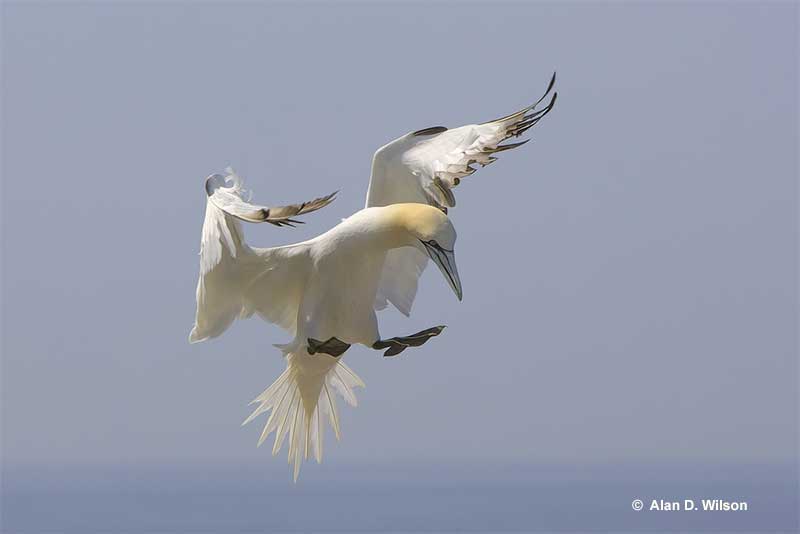
Birds have lots of interesting names! They can be named after everything from bright colors in their plumage to people and even cities.
Have you wondered how some birds got their English language names? Can bird names say something about a bird’s behavior or even its attitude?
See this article for answers about birds with names that start with the letter “N”!
On this page
- Bird Species Starting With N
- Nashville Warbler
- Neotropic Cormorant
- Northern Bobwhite
- Northern Cardinal
- Northern Flicker
- Northern Fulmar
- Northern Gannet
- Northern Goshawk
- Northern Harrier
- Northern Hawk Owl
- Northern Mockingbird
- Northern Parula
- Northern Pintail
- Northern Rough-winged Swallow
- Northern Saw-whet Owl
- Northern Shoveler
- Northern Shrike
- Northern Waterthrush
- Northwestern Crow
- Nuttall’s Woodpecker
Bird Species Starting With N
In the following list, you will find North American birds whose names start with N. And yes, most of them have “Northern” in their names.
Nashville Warbler
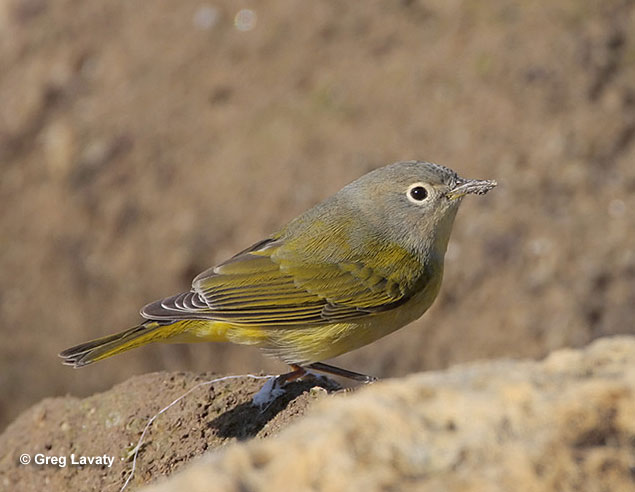
Nashville Warblers don’t nest anywhere near Nashville! Even so, the name stuck and has always been used for this pretty little bird.
Like some other birds, the Nashville Warbler got its name from its place of modern scientific discovery. In 1811, after ornithologist Alexender Wilson found this species in Nashville, he decided to name the species after that city.
He must have been there during migration because this is the only time you can see Nashville Warblers in Nashville. In the summer, we can watch them foraging for insects in parts of the northern USA and Canada.
In winter, Nashville Warblers show their avian beauty in Mexico.
Neotropic Cormorant
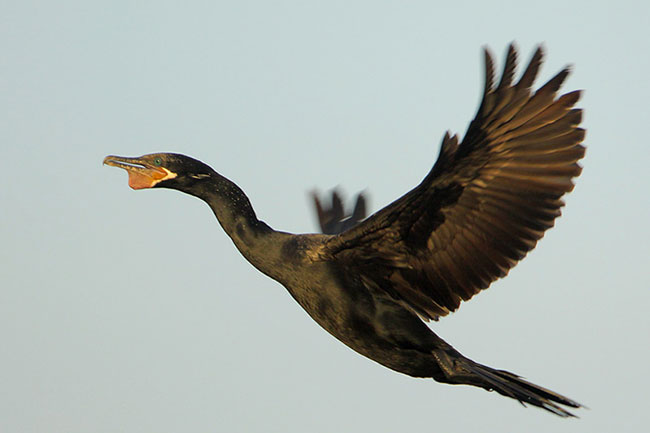
Neotropic Cormorants have a pretty good name. Although we can see them in many parts of the southeastern USA, this cormorant is mostly a tropical species that lives in the “Neotropical Region”.
This includes countries south of the border from Mexico to Argentina. In much of that region, the Neotropical Cormorant is also a common species and the only cormorant that occurs.
Like other cormorant species, it swims below the water to hunt for fish and other aquatic creatures. After swimming, Neotropic Cormorants like to perch on an exposed branch and spread their wings so they can dry them off.
Northern Bobwhite
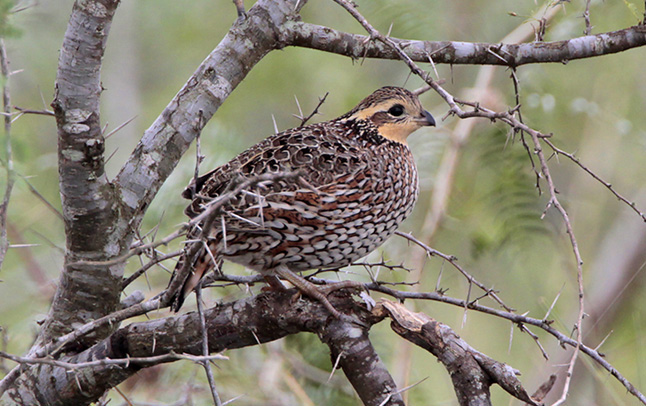
The Northern Bobwhite is a small quail named after its most commonly recognized vocalization. Like other bobwhite species, males make a double-noted, loud whistling call.
When European settlers heard this distinctive vocalization, they thought it sounded like the bird was saying, “bob-white!”.
It’s a pretty good name! Go birding in places where Northern Bobwhites live and you can still hear that loud and unique vocalization. It’s a good way to find them, especially because Northern Bobwhites often call from fence posts and other elevated perches.
The reason for the “Northern” part of its name is because it ranges further north than other Bobwhite species.
Northern Cardinal

The Northern Cardinal is one of the few birds named after clergymen. When European settlers saw the Northern Cardinal, they were reminded of the cardinals of the Catholic Church. These high-level Catholic clergymen wear distinctive deep red caps and robes that easily set them apart from most other members of the clergy.
But why “Northern Cardinal”? Why not just “the cardinal”? Although a lot of people just refer to them as “cardinals”, there are other species of cardinals that live in South America, and one or two species have been introduced to Hawaii.
None of them range nearly as far north as this species.
Northern Flicker
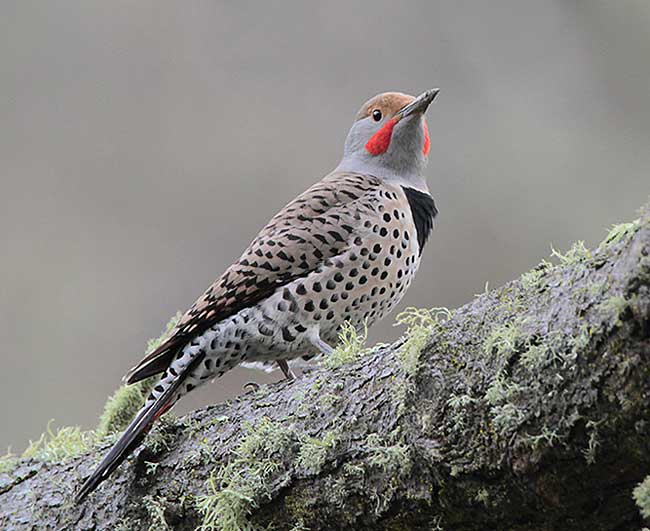
Northern Flickers are woodpeckers only found in North America. No one knows when folks started calling them, “flickers” but the term is probably linked to the bird’s calls and courtship displays.
Northern Flickers often make vocalizations that sound like, “flicka flicka”. Watch a pair of flickers in spring and you might also see them quickly flick their wings as they face each other on a perch.
This species is called “Northern” because other flicker species live in the southwestern USA, Cuba, and further south. Based on their yellow wing feathers, Northern Flickers in eastern North America were once known as Yellowhammers and Yellow-shafted Flickers. Western birds are called Red-shafted Flickers (pictured).
Northern Fulmar
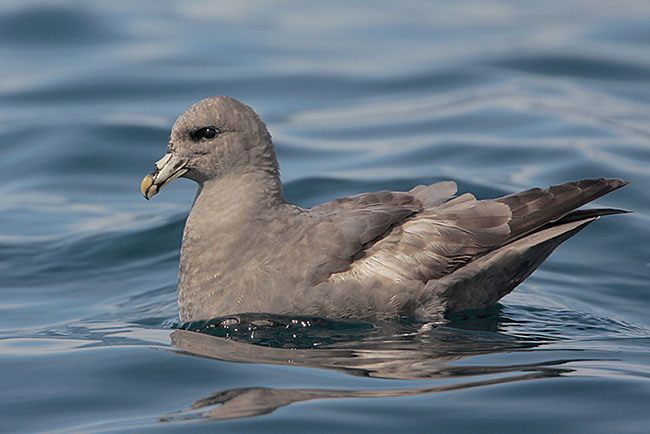
The Northern Fulmar has an odd-sounding name with roots in another language. This species has been well known to Scadinavian cultures and other northern peoples for thousands of years.
In Old Norse, “fulmar” means “foul smelling gull” and must stem from this bird’s reactions to someone trying to capture it. To deter predators (including people trying to grab them), fulmars vomit a nasty, foul smelling substance!
Since there is also a “Southern Fulmar” that lives in the southern oceans, this species is known as the “Northern Fulmar”. If Northern Fulmars in the Atlantic are a separate species from those in the Pacific, “Northern” would be replaced with another word.
Northern Gannet
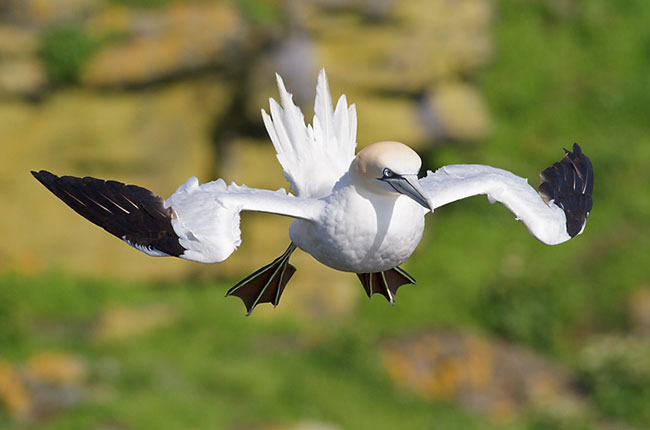
Northern Gannets are big seabirds with an old English name. The name for this bird is derived from the term “ganot”, an Old English word for “strong” or “masculine”. This is undoubtedly related to the gannet’s large size, especially compared to gulls and other seabirds.
Learn more: The birds with unfortunate names – boobies
Folks in England might have also been impressed by the bird’s strong flight and incredible diving capabilities. After Gannets spot schooling fish, they fold their wings and power dive straight into the ocean!
This species is the Northern Gannet to distinguish it from two other gannet species that live in southern Africa, Australia, and New Zealand.
Northern Goshawk
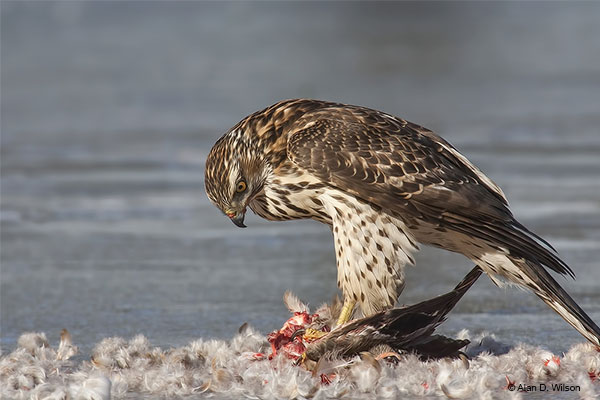
The Northern Goshawk is a raptor with a name that pays homage to its impressive size. Its name comes from Middle Age English and refers to a hawk that either eats geese or is as big as a goose!
The term “gos” was a word they used for “goose”. Northern Goshawks are hefty birds but they rarely catch geese. However, they might be trained to hunt geese; something that Middle Age falconers likely did.
This species has “Northern” in its name because other goshawk species that live in Africa and other tropical regions. Most ornithologists have split the Northern Goshawk into the American Goshawk and the Eurasian Goshawk.
Northern Harrier
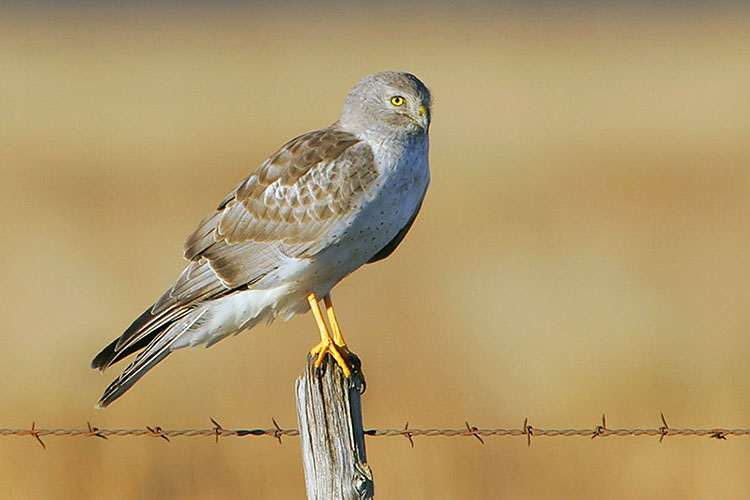
The Northern Harrier may be named after a type of hunting dog! The term “harrier” has been used for hunting dogs that follow and tire their quarry since the 13th century.
Since these long-tailed raptors also hunt by flying low over the ground, at some point, folks also started referring to the birds as “harriers” too.
There are several species of harriers but only one lives in much of North America. For this reason, this species has “Northern” in its name. Watch for this elegant raptor coursing low over grasslands and other open habitats. You might also see it hovering in place!
Northern Hawk Owl
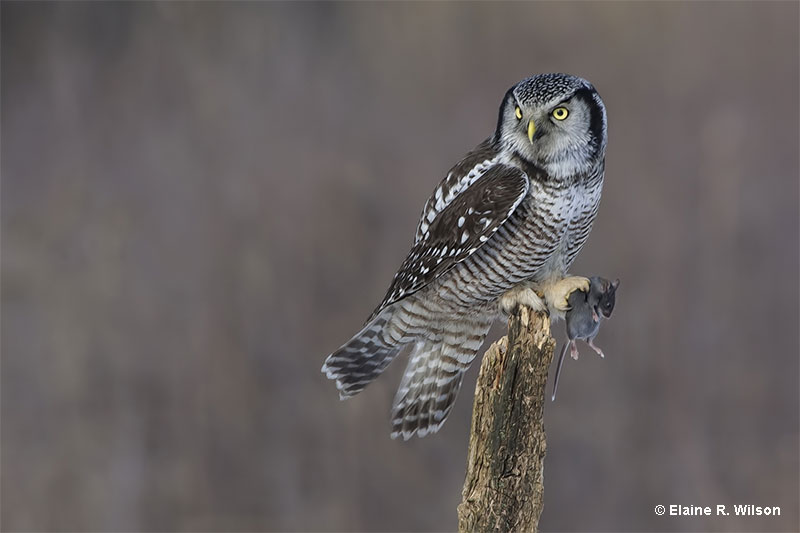
The Northern Hawk Owl is named after its distribution, appearance, and behavior. True to their name, this distinctive owl species only lives in far northern habitats. They are at home in the snow and can spend the winter in extremely cold places!
This bird of cold boreal forests occasionally shows up just south of its typical range but rarely flies as far south as Pennsylvania.
Unlike many other owl species, Northern Hawk Owls often hunt during the day. Their tapered shape has also often reminded birders of a hawk or falcon, especially when they take flight and swoop low over the ground to catch a vole.
Northern Mockingbird
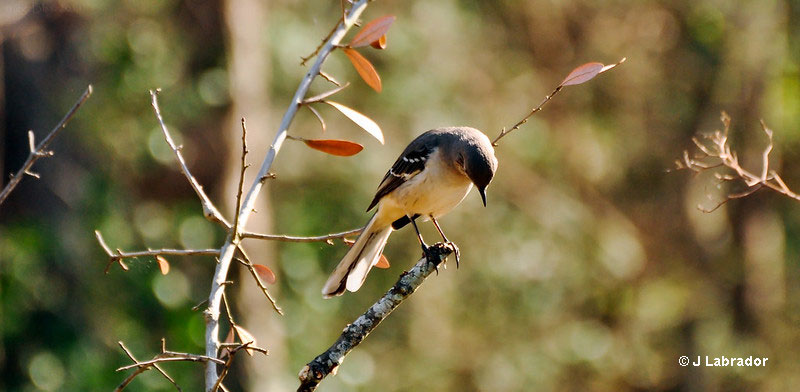
The Northern Mockingbird is one of the best-known birds in North America. Even folks who don’t watch birds can’t help but notice this vocal species! They can sing for hours, even in the middle of the night, and if you listen close, you’ll know why it’s called the “mockingbird.”
Northern Mockingbirds are fantastic mimics. Their songs typically include vocalizations of other bird species, sometimes several species in the same song!
This species is known as the “Northern Mockingbird” because there are several other mockingbird species. However, all of them live further south, from Mexico and the Caribbean to South America.
Northern Parula
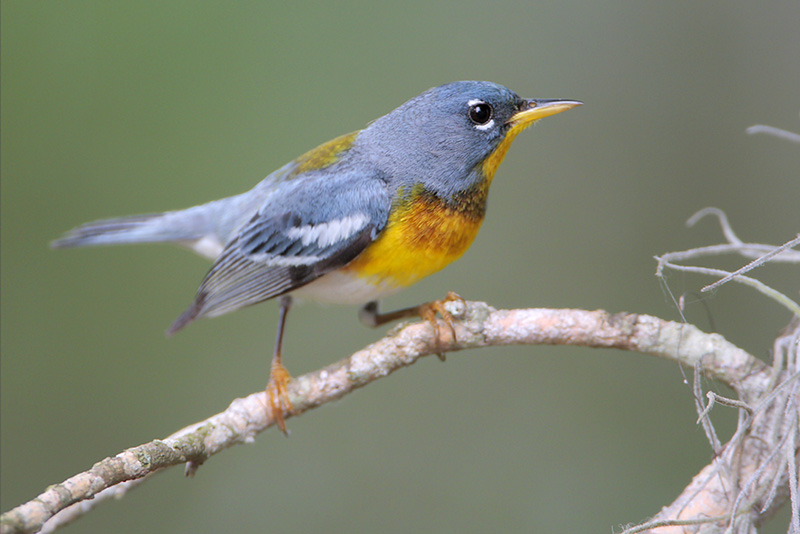
The Northern Parula is one of the few members of its family that does not have “warbler” in its name. Although this species is related to the Cerulean Warbler, Magnolia Warbler, and other warbler species, it’s known as a “parula”.
Parula means “small titmouse”. This and one other related species were named “parula” because they reminded some ornithologists of tiny titmice. Like the titmouse, parulas have some blue in their plumage (although darker and prettier than titmice). These small warblers can also creep on branches and make other, titmouse-like behaviors.
They have “northern” in their name to separate them from the Tropical Parula of Latin America.
Northern Pintail
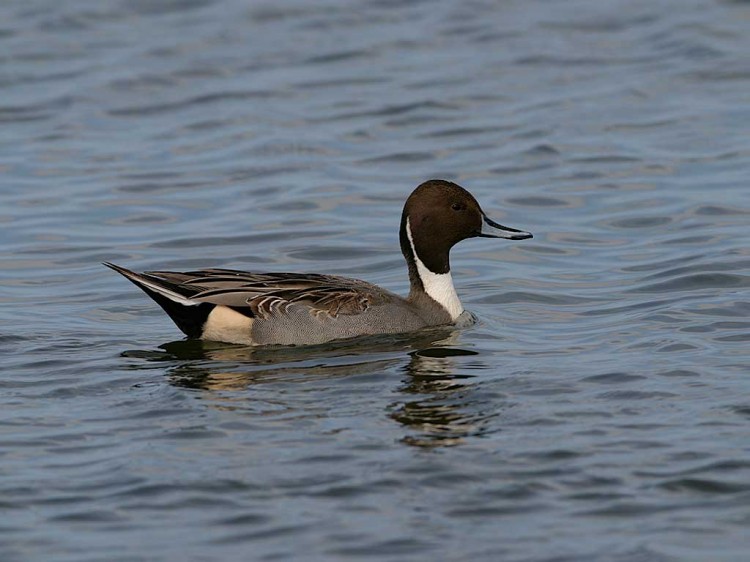
Photograph © Sam Crowe.
The Northern Pintail is an elegant duck named after its distinctive tail. “Pintail” is an old word for a long or pointed feather. Take a close look at a pintail floating on the water and you should see its long, slender tail. Watch Northern Pintails in flight and the long, central tail feather (or pintail) trails out behind each bird.
Northern Pintails are also the only pintail species that lives in the northern hemisphere. Although a couple other ducks also have elongated central tail feathers, they aren’t closely related to the Northern Pintail.
The other three species of pintails only range as far north as the Caribbean.
Northern Rough-winged Swallow
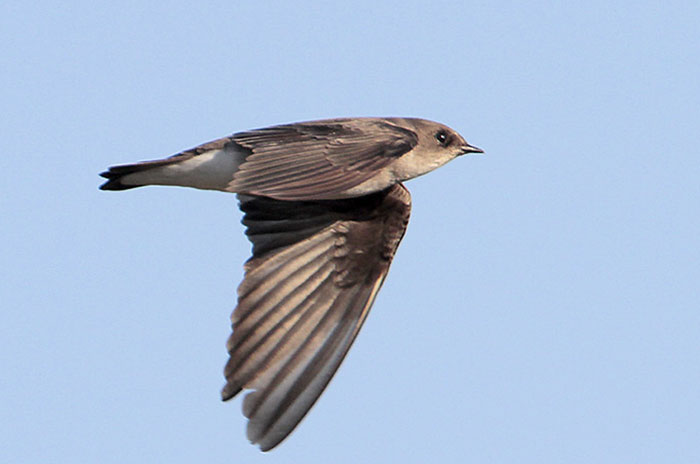
Photograph © Greg Lavaty
Northern Rough-winged Swallows are named after their mostly northern distribution and a distinctive characteristic. However, to notice their rough wings, you have to drag your finger across the front edge of the bird’s outermost primary feathers!
If you can do that, you’ll feel a rough, comb-like edge not found in other swallow species. This was an obvious feature for ornithologists who first worked with this species. Since they didn’t have binoculars, the only way they could get a close look at birds was by shooting them.
That allowed them to inspect birds in the hand and notice subtle characteristics like “rough wings”.
Northern Saw-whet Owl
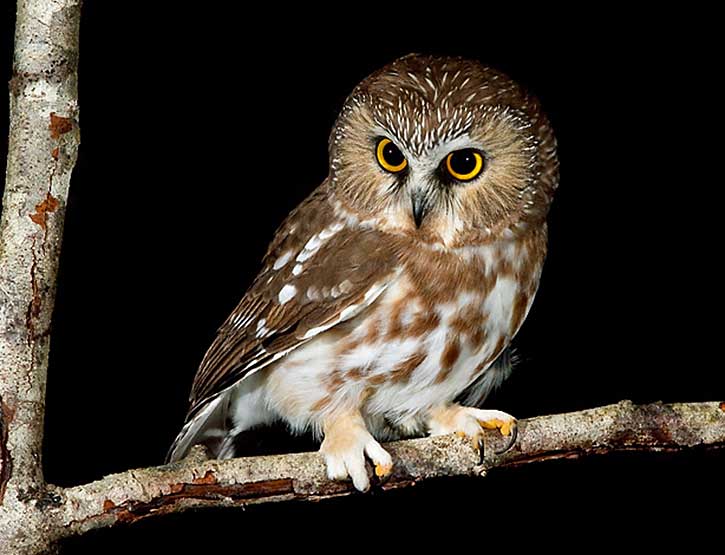
The Northern Saw-whet Owl has a truly interesting and poetic name. It’s also an old fashioned term related to the sound made by sharpening a long, old saw! Supposedly, the repeated tooting call of this cute little owl sounds a lot like that.
Although these days, it’s rare to hear someone sharpening a saw, you can listen to Northern Saw-whet Owls. Pay a nighttime visit to northern forests in spring and summer and you might hear their whistled calls!
This species has “northern” in its name because it lives much further north than a pair of related species from Central and South America.
Northern Shoveler
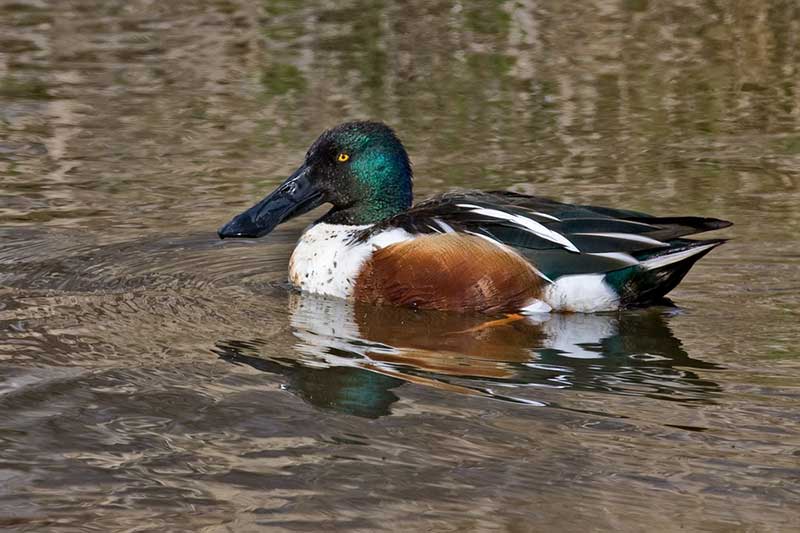
The Northern Shoveler is named after the duck’s most noticeable characteristic; its large beak. Although they don’t use it like a shovel, their big bill does sort of look like one.
Northern Shovelers also live in northern Europe and, undoubtedly, their name stems from people who hunted them in England centuries ago.
Although it looks like they could use their beak to dig in the mud, Northern Shovelers dabble with their beaks in shallow water. They have “northern” in their name to set them apart from three other shoveler species that live in South America, Southern Africa, and Australia.
Northern Shrike
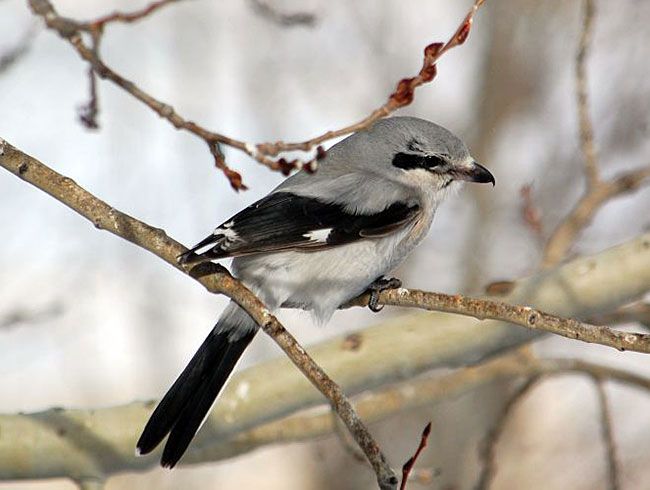
Photograph © Robert Rosenberg
The Northern Shrike has a name that dates back to the Middle Ages. Although no one knows for sure, it’s assumed that the word “shrike” stems from a Middle English word “shrik”. This term means “shriek” and might be related to shrike vocalizations.
It might also be another old word for a “thrush” or “thrush-like bird”. Either way, this term has become the name for a unique family of songbirds; ones that have become mini predators!
Their name seems fitting because shrikes catch and kill animals, even small birds and mice. This species has “northern” in its name because it lives much further north than other shrike species.
Northern Waterthrush
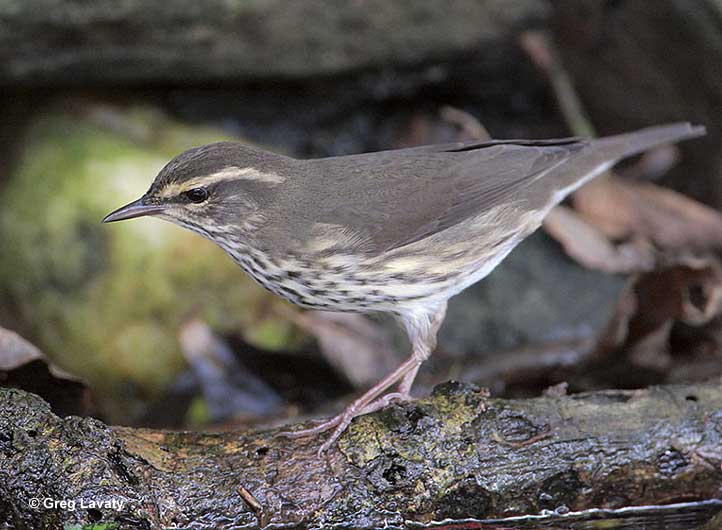
The Northern Waterthrush isn’t a thrush at all. It’s actually a warbler with vaguely thrush-like plumage that is brown above and streaked below. Northern Waterthrushes also live near water and breed much further north than the related Louisiana Waterthrush.
On their breeding grounds, this species only lives in swampy forests and buggy, wet spots inside woodlands. In migration, they can occur anywhere but still prefer wet areas like the edges of lakes and swamps.
In winter, Northern Waterthrushes also prefer wet habitats. They are especially common in tropical mangrove forests, forested wetlands, and swamps. No matter where they live, Northern Waterthrushes constantly bob their tails up and down.
Northwestern Crow
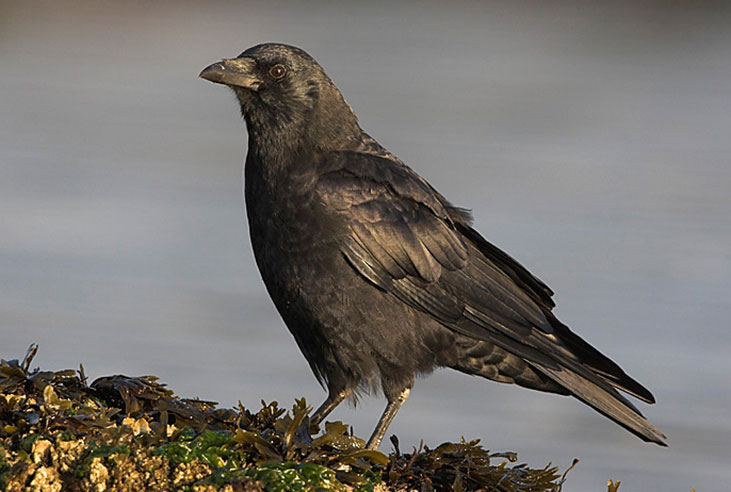
The Northwestern Crow is sometimes known as a distinct species, or a distinctive subspecies of the American Crow. It gets its name from the bird’s distribution; a range that extends from southern Alaska south along the coast to Washington state.
Its name is a good one because the Northwestern Crow is very much tied to coastal habitats in this area. Essentially, this species is an avian beachcomber! Similar to gulls, small groups of crows like to walk on and inspect rocky, northwestern shores.
In their range, they forage for carrion and other bits of food that they find on the beach.
Nuttall’s Woodpecker
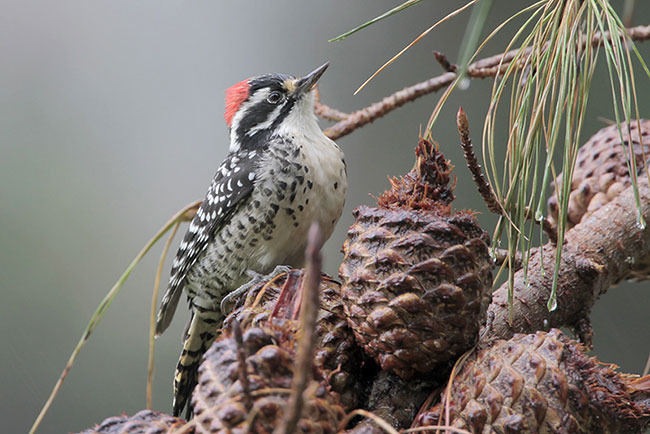
The Nuttall’s Woodpecker is named after Thomas Nuttall, an English naturalist who participated in expeditions to western North America in the 1800s. In 1843, American naturalist William Gambel named this woodpecker species after Nuttall, his mentor.
If this woodpecker had a more descriptive name, good candidates might be the “California Woodpecker” or the “Oak Woodpecker”. This species is nearly restricted to California and is a signature species of that state.
Although it can live in some other habitats, most Nuttall’s Woodpeckers do live in the oak woodlands so characteristic of many parts of California.
Go birding in these habitats and it won’t take long to see one!

